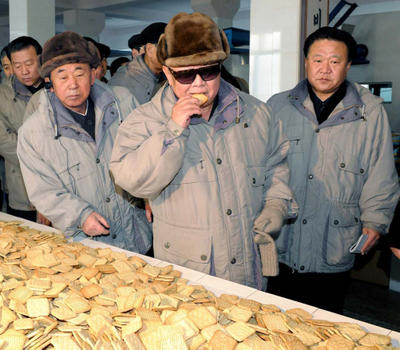Every year major media outlets run stories about diminishing food supplies, growing prices and declining living standards in North Korea.
The problem with these reports is that on balance they are not true. There have been ups and downs, to be sure, but over the last ten years the economic situation in North Korea has been improving steadily.
The existing statistics are remarkably untrustworthy, being essentially educated guesses by analysts. Nonetheless, these statistics indicate a moderate growth of the North Korean economy.
My frequent talks with North Korean refugees, smugglers, migrant workers and those who have illegal Chinese mobile phones confirm the statistics. Throughout the last ten years the economic situation in the country has improved, even though this improvement was very moderate.
What exactly does ‘improvement’ mean in this context?
First, few if any North Koreans now face the threat of starvation. Malnourishment remains a widespread problem as many (perhaps, a majority of) North Koreans don’t have enough to eat in spring. This has a seriously negative impact on their health and is especially bad for children. Nonetheless, unlike the 1990s, it seldom leads to death.
The average North Korean meal is a bowl of boiled corn with a few pickles. Meat or fish are eaten only on special occasions or by affluent people.
Second, over the last decade material inequality increased in leaps and bounds. Some of the new rich are officials who take advantage of their positions while others are successful entrepreneurs running all kinds of private businesses.
A successful North Korean entrepreneur nowadays might even openly own a car. For instance, in a relatively small borderland city with a population of some 90,000 people there are officially three private cars. Much more frequently well-to-do North Koreans prefer to register their cars with state agencies. But at any rate, just ten years ago a private car was almost unthinkable.
The less successful entrepreneurs and craftsmen are still doing quite well as indicated by the significant increase in consumer durables owned by North Koreans. Fifteen years ago a fridge was a sign of exceptional luxury, almost as rare as a private jet in the US. Now it’s a bit like a luxury car, an item that 10–20 per cent of households can afford.
Third, there has been a spread of computers, including privately owned ones. In most cases these are old, used computers which are imported or smuggled from China. They are quite outdated but they are computers nonetheless. Recently I interviewed a group of school teachers from the countryside and they said that nowadays every high school, even in remote parts of the country, is likely to have at least one computer (admittedly, this wonderful contraption is seldom switched on).
This does not mean of course that North Korea has become a consumer paradise. In spite of some improvements, the gap between the North and its successful neighbours continues to widen. However, in absolute terms the North Korean economy is not shrinking any more.
There have been serious setbacks. The currency reform early last year is a perfect example. For a while, this failure almost paralysed the economy and created serious food shortages across the country.
But what brought about this moderate growth? It seems that there are three major contributing factors.
First, North Korea has been quite good at begging and blackmailing the outside world into providing aid. The aid was initially provided by South Korea and the US, but now it comes almost exclusively from China.
Second, North Korea’s technocrats have learned how to run the country in its new situation. They are not very efficient at this, but, to quote Marcus Noland, ‘they are muddling through.’
Third and most importantly, over the last decade a relatively powerful private economy has developed in North Korea. North Koreans did not merely learn how to trade privately, they now produce privately as well. This growth of industry, invisibly and privately, seems to have contributed to the growth described above.
The growth is moderate, and no breakthrough is likely. Nonetheless, it is real and palpable.
Andrei Lankov is an associate professor at Kookmin University in Seoul and an adjunct research fellow at the Australian National University.
A version of this article first appeared here in the Korea Times.


Lankov is about right. That improvement was certainly visible throughout the country in 2002-2003 compared with the 1990s when I travelled many times from Beijing, and more so in PY, and since then locals and locally-based foreigners report that there has been significant improvement in terms of power supplies (as more hydro facilities came into operation), fuel supplies, cars & vehicles on the road, availabilities of consumer electronics, and housing. This is all despite the sanctions, silly and botched currency reforms in Dec 2009-Jan 2010, and withdrawal of ROK aid. Foreign trade and investment continued to climb throughout this period, as did private entrepreneurship and private trade, and it was these developments that probably drove these better circumstances.